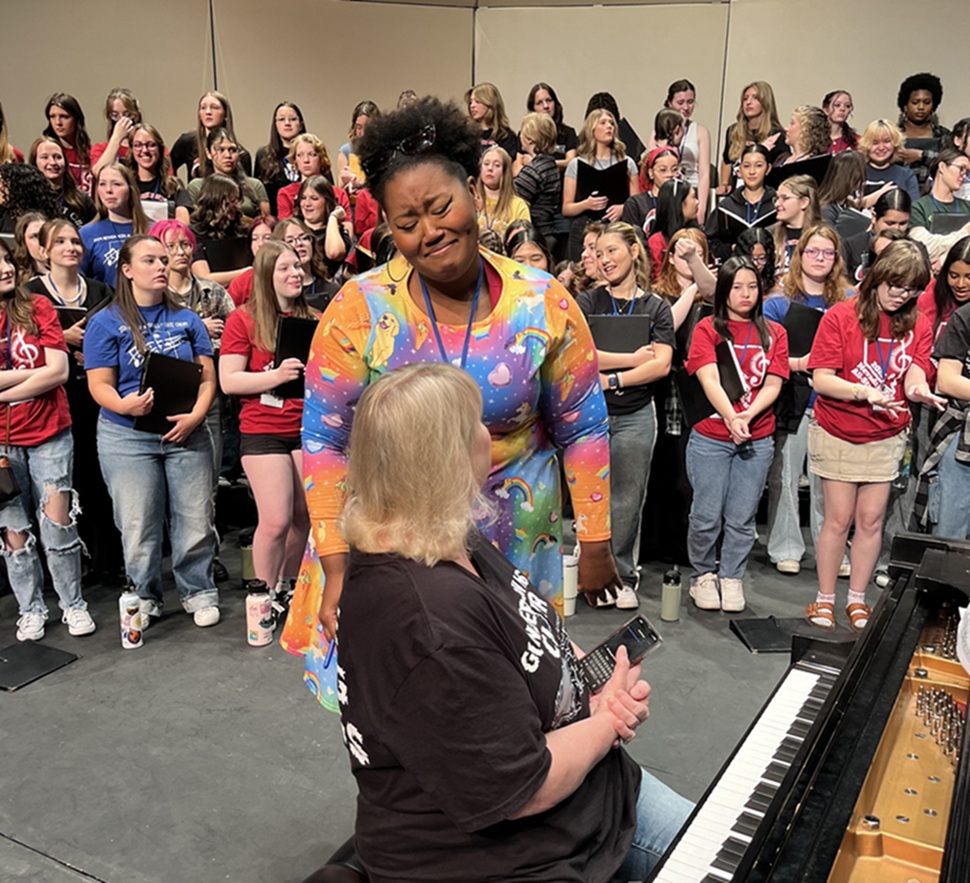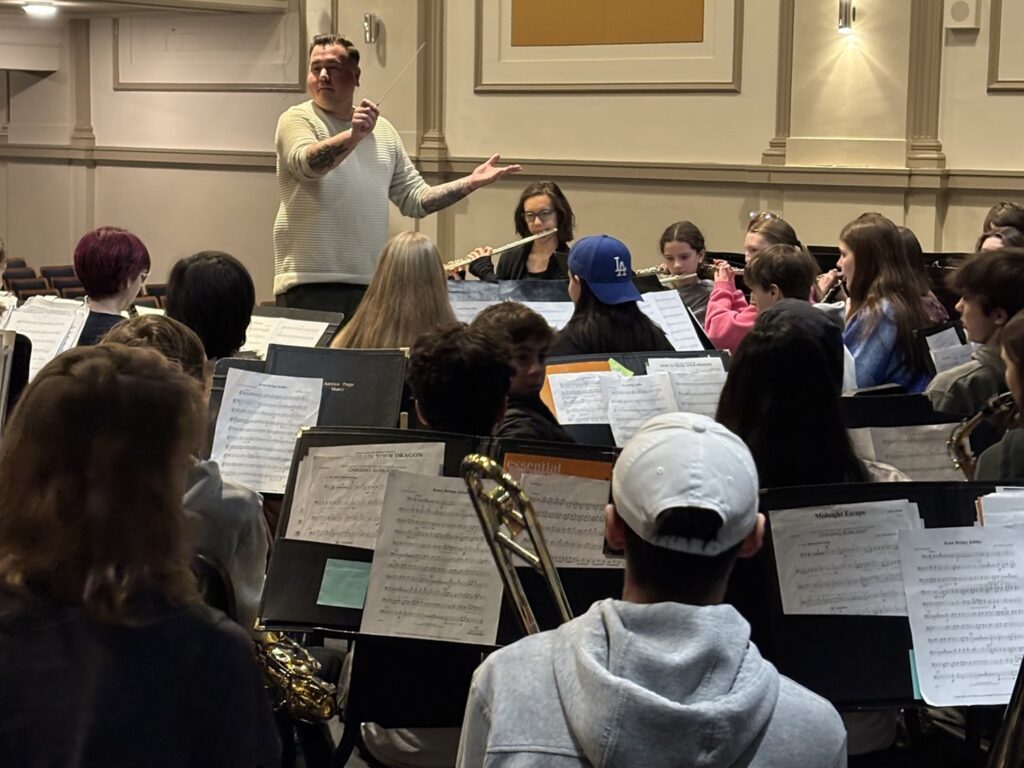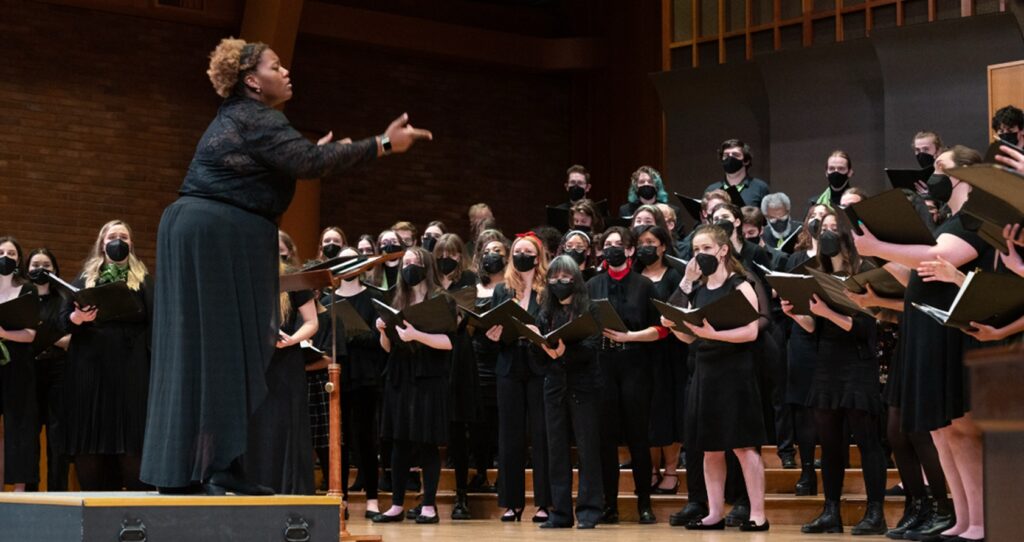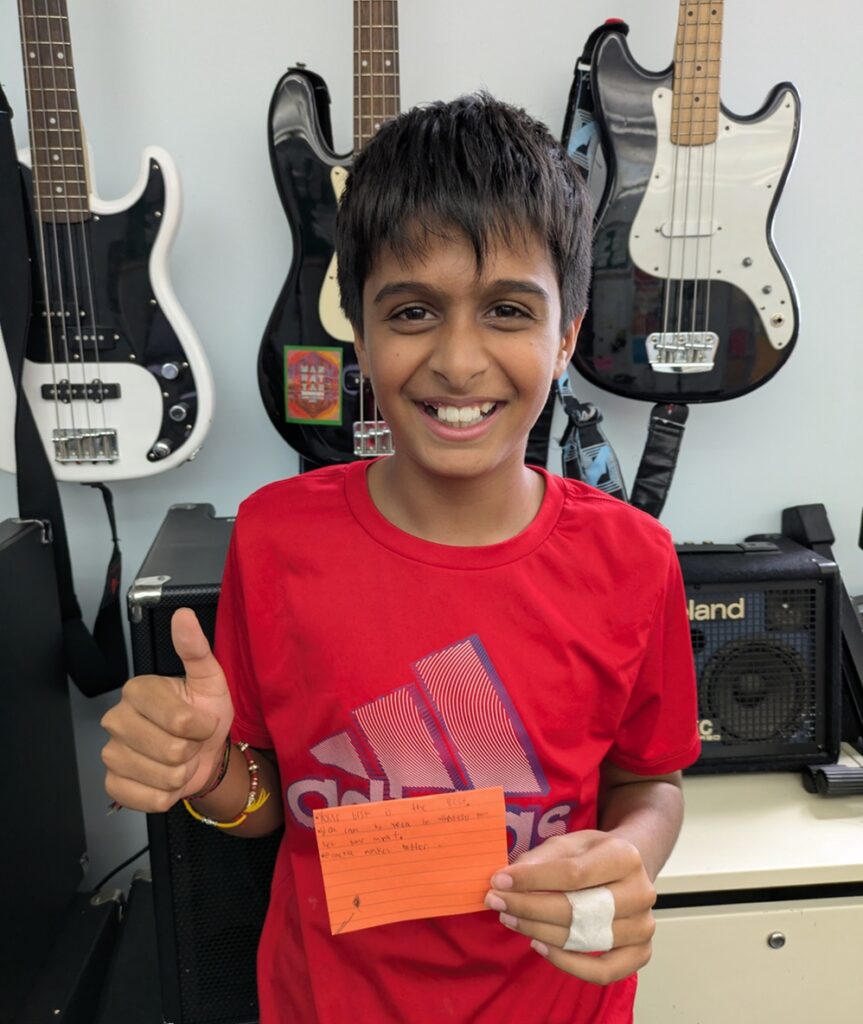Tagged Under:
STEAM-Powered Music Technology
Expanding music horizons and empowering students are keys to an Arizona arts academy and its music technology program.
During lunch time at Shadow Mountain High School in Phoenix, Arizona, students have the chance to enjoy more than just food; they can look to the outdoor stage, where performers from North Valley Arts Academies (NVAA) — a performing arts program in the Paradise Valley Unified District — may be playing some of their own original music.
Nick Popovich, Shadow Mountain’s teacher for the Music Technology component of NVAA, makes sure his students have at least five or six chances to perform on the outdoor stage during each school year. “It could be original songs. It might be a piano focus or a guitar focus. We might have a full band on stage,” Popovich says.
Much like other elements of the Music Tech program, lunchtime performances are a largely student-led initiative. Popovich says that students handle everything from “the setup, getting the instruments ready and plugged in, sound checks, tearing things down afterward.” They even market upcoming shows to the student body through fliers and announcements.
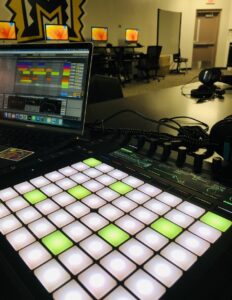
Making Music Accessible to All
NVAA’s Music Technology component is all about empowering students to take initiatives in creating their own music and finding ways to perform it. “I try to expand their musical horizons,” Popovich says. “Oftentimes, students are very passionate about the music they listen to, and they tend to put up boundaries about other styles, especially at the high school age.”
By allowing students to create styles of music that they already love, while also exposing them to new styles and new musical techniques, the Music Tech component appeals to a wide variety of aspiring teen musicians. “One of the biggest foundations that helps with the program is that students are creating the music they want to create, whatever genre or style they prefer,” Popovich says.
With instruction in music composition, performance, post-production and more, Music Technology can appeal to a lot of different students with different skills and interests — whether they have experience in traditional music theory or not.
“We have students who come in and say, ‘I didn’t want to learn an instrument or sing in an ensemble, but I like creating my own music,’” Popovich says. “We also have students who are in choir, band or orchestra, and they have a lot of skillsets in these areas.”
Having a diverse variety of students allows peers to learn from one another. “When you have these students in the same class, the collaboration factor really helps. You’re combining their efforts in terms of strengths and weaknesses,” Popovich says. “Not only are they working together and supporting each other, but their ultimate product at the end of the class has different qualities and characteristics that it wouldn’t have otherwise.”
Once prospective students have a clear understanding of what the Music Technology component entails, many of them want to participate. “If someone hears the term ‘Music Technology,’ they immediately picture a recording studio or a sound board,” Popovich says.
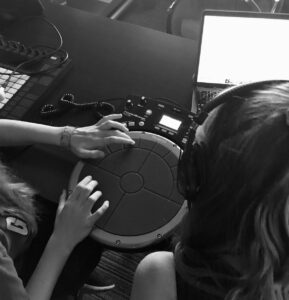
Students Spread the Word about School’s Vast Offerings
Music Technology isn’t just about creating tunes on the computer; the program also offers physical instruments that students can learn as well. Popovich emphasizes the importance of promoting the program’s vast offerings: Students can create original music, learn digital production software, learn to play studio instruments like guitar and piano, perform their new songs on the school’s outdoor stage, and even distribute their music on streaming platforms like Spotify.
Fortunately, enthusiastic students are always ready to spread the word. Popovich says that his students are great at being “their own businessperson,” promoting what they’ve learned in the course. “They really do sell the program. They’re the ones who have that excitement, and they’re eager to share it with others,” Popovich says. “It’s always going to be better coming from them than from me.”
In the nine years since the Music Tech component began, the number of registered students has continued to grow each year. In recent years, even students who live outside of the Paradise Valley Unified District have begun commuting to Shadow Mountain High just to participate in Music Technology courses.
Because Arizona’s public schools allow for open enrollment, students outside the district can apply for NVAA. “They’re making their school day happen here, even if they’re not living close by,” Popovich says. “We have students from all over the Phoenix area. Some of them drive in or get a ride; it’s important to them, and they’re putting in the effort to make it happen.”
One of NVAA’s points of pride is its professional-level equipment setup. “Each student has a professional workstation with an Apple Computer with Ableton Live 12 Suite,” Popovich says. “They have access to studio instruments, audio interfaces and third-party signal processing plugins if they need it. They have the ultimate access to everything they need, just like in a professional setting.”
Popovich, who was recognized as a 2025 Yamaha “40 Under 40” music educator, says it’s important that “each student, regardless of skill level or experience, has everything they need in their setup.”
As a result, students at a variety of different musical levels have the opportunity to learn together, collaboratively.
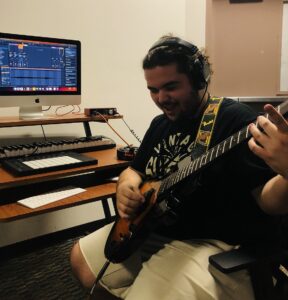
Interdisciplinary Collaboration
When Popovich discusses his Music Technology component, he keeps coming back to one word: collaboration. Not only are students working on projects together, but different departments in the school collaborate as well. On an individual level, even different parts of each student’s brain must work in collaboration.
Music Technology is a discipline that includes all parts of STEAM — science, technology, engineering, arts and math. It works both the logical, problem-solving side of the brain as well as the creative, artistic parts.
“A lot of it is incorporated naturally more than the students realize,” Popovich says. “If they’re making a beat in a workstation, they’re saying, ‘I want the kick drum to happen on these beats at this velocity,’” Popovich says. “They may not realize it, but they’re actually programming. They’re programming the software, so that when they launch this clip, it’s going to play this part for this long at this rate.”
As with many STEAM fields, music technology opens a lot of doors for interdisciplinary collaboration with other departments. Recently, the NVAA’s Music Tech program worked with the theater department to create a series of World War II-themed soundscapes for an upcoming show.
“I tasked one of our classes to build a project out of it. We talked about what soundscapes are,” Popovich says. “We communicated with the students in the theater program and the director for the show.”
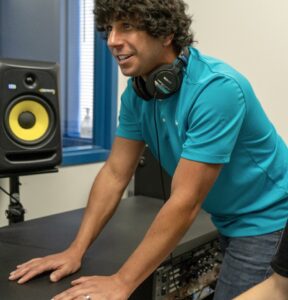
Then, using royalty-free music samples, Popovich and his students put together a series of soundscapes, sent them to the theater department and asked for feedback. After refining their soundscapes to the theater director’s specifications, they were utilized in the school play. This project helped students work on another element of STEAM: engineering. “The soundscapes were balanced and blended, but not too distracting from what was going on in the show,” Popovich explains.
The process of collaboration was educational in itself. “It goes beyond the creative recording instruments. It goes beyond arts and technical knowledge,” Popovich says. “It gave students an idea of what it was like to collaborate with the theater department and also opened their eyes to some new career pathways.”
Collaboration for the sake of professional development is also important to Popovich; he regularly invites guest artists from Arizona State University and local community colleges to give his students workshops, masterclasses and more.
“I really value the opportunity to partner with these organizations because it allows us to work with other people,” Popovich says. “Students might hear the exact same thing from me, but when a guest artist says it, it might register more because it’s not just me saying that same thing over and over again.”
Guest artists also help inspire students to look into their own musical futures. “I ask them a lot of questions about their experiences,” Popovich says. “I ask them, ‘If you were in these students’ position right now, what do you wish you knew?’”
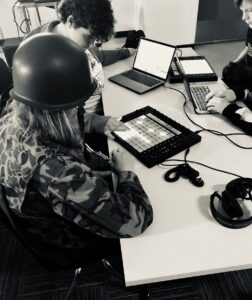
Looking to the Future
One of Popovich’s biggest goals is to get his students thinking about how they will continue with music after high school. “From the very beginning, I try to instill in students that they have a choice — that there are two paths they can take with this education,” Popovich says. “One is continuing to make music as a lifelong skill — no matter how old you are, you can make music as a hobby.”
However, students also have a second option: They can pursue music as a career.
“We talk about the industry a lot, and how what we’re learning will give you a great foundation if you choose to pursue a career in the music industry after high school. They learn that there’s more than the performer you see on stage, or the person you hear singing in a song you’re streaming. What makes everything happen for those performers?” Popovich says. “Writing, mixing, mastering, producing: Those are all careers they can pursue.”
Popovich makes sure his students are aware of these career possibilities. At the beginning of the school year, before most students have even considered careers after graduation, Popovich shows them college-level classes that they can pursue after high school, like the popular music program at Arizona State University (the director of this program is another 2025 Yamaha “40 Under 40” educator, Erin Barra). “I’m on their website, showing them a degree at a university that’s 20 minutes down the road,” he says.
Popovich also wants his students to know that they can become disruptors in the music industry. In the past two decades, the music industry has evolved with the rise of streaming platforms and online distribution. Popovich challenges his students to think about what might be coming next.
“Right now, we’re talking about future technologies, like what’s happening in the world of artificial intelligence,” he says. “I want to make sure that they know there’s no reason anyone sitting in this classroom can’t be a pioneer in a future technology.”
Currently, one of Popovich’s greatest sources of pride is his current graduating class. “I have six students who are pursuing music after graduation,” he says. “Some are going to go into music industry studies at the community college nearby. Some are going into the popular music program at ASU. Some are moving onto the conservatory of recording arts and sciences.”
Most of all, he is proud of how each student is taking their own unique approach to a musical career after high school. “Six students, all pursuing music in their own way,” he says. “The course had an impact on that. It’s exciting to see them pursue something they’re truly passionate about.”










